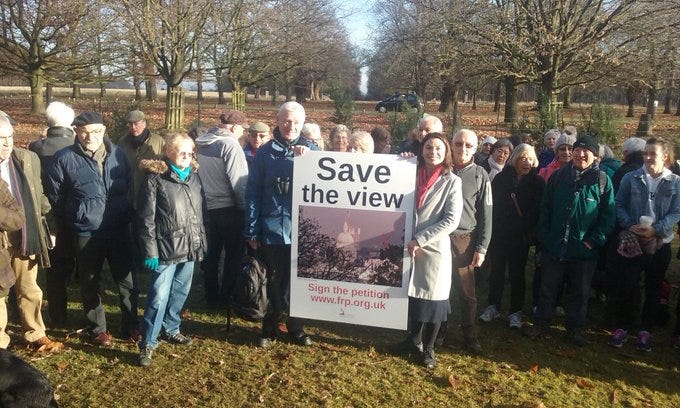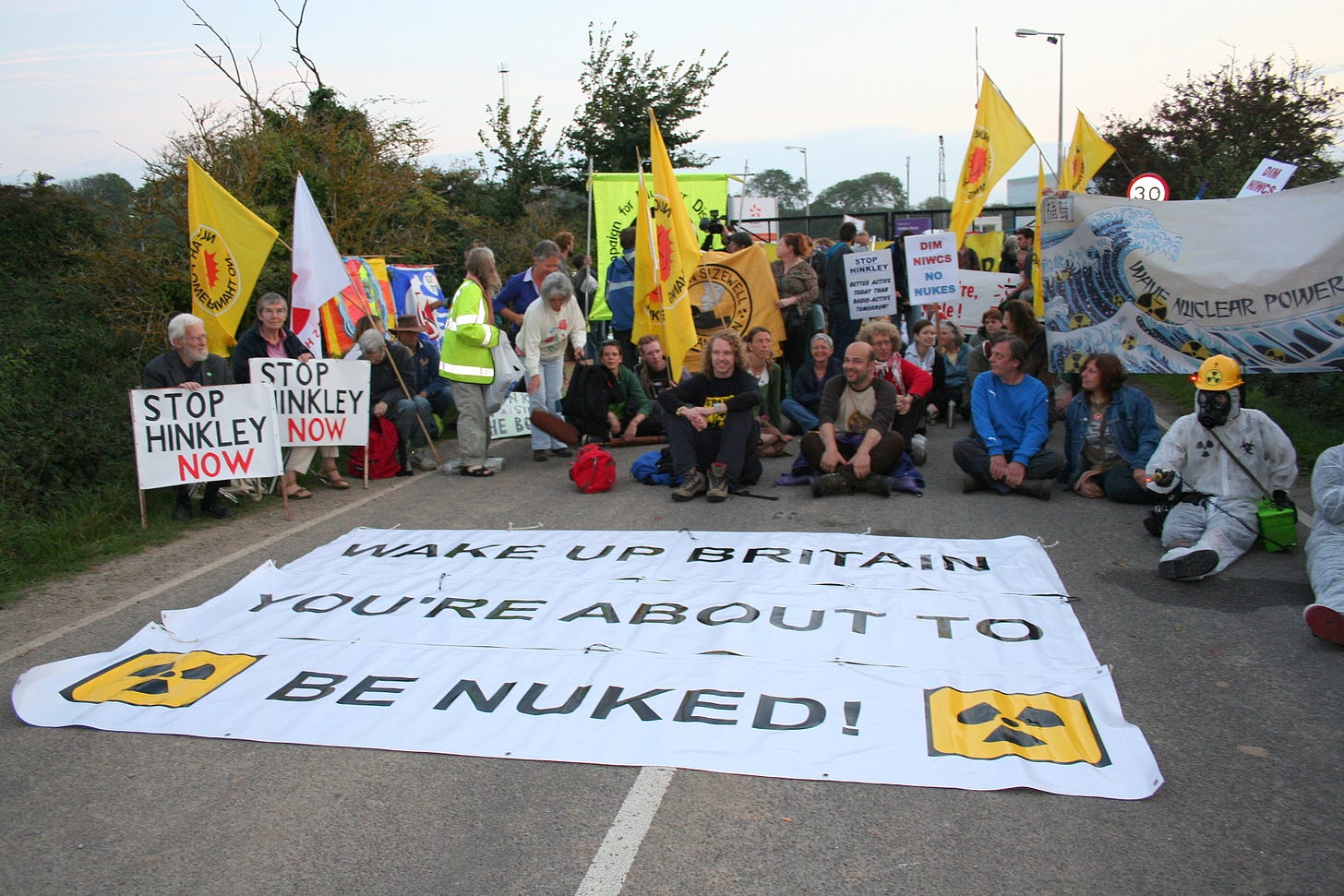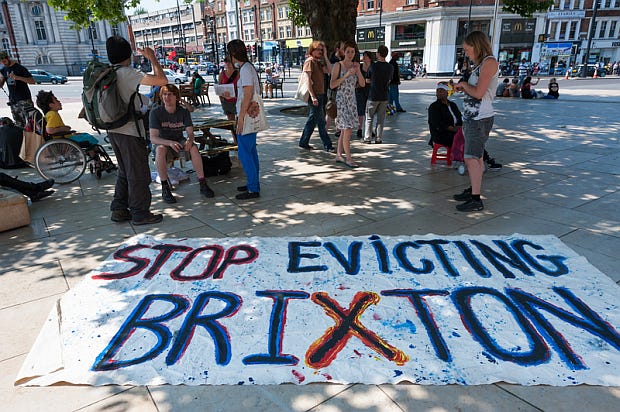The Spectre of Nimbyism Poses a Tangible Threat to the British Economy
For years now it seems as if every major economic development in the United Kingdom is disrupted and destroyed by middle class NIMBYs.
Not In My Back Yard. So seems to be the rallying cry of the middle class up and down the nation. Job creating works, construction of new infrastructure, the green energy transition, efforts to combat the housing crisis - all put on the backburner in favour of lengthy planning consultations, pressure groups, and the petty grievances of a select few who would care more about the vista from their favourite hiking trail than national progress. NIMBYism is, at its core, a selfish perspective - most people recognise the fact that this country would benefit from a boom in construction, new housing, new infrastructure, a more sustainable energy sector. etc - yet when push comes to shove and this construction has even the most miniscule impact on their lives, they abandon their convictions in the hope that growth will take place elsewhere, quite literally, out of sight.
Do not get me wrong. It is important that the community is consulted on new developments in their area - that is what citizen-led democracy is all about. Individuals and communities deserve to have their voices heard, anything else would amount to dictatorship. We would not want to live in a state where authorities could construct an open refuse dump in the town centre, or flatten the local park for use as a parking lot, for instance. I exaggerate, but NIMBYism is perfectly valid a reasonable percentage of the time and it is important that every member of the public has the right to have their voice heard. However these rights shouldn’t extend to blocking the construction of affordable housing in deprived Stratford because it would “spoil” the view of the, already, barely visible St. Paul’s Cathedral from your dog-walk in Richmond Park; or hindering the transition to green energy sources due to the threat of seeing a wind turbine in the actual middle of nowhere, Scotland. Time and time again it seems that the country is being cheated out of critical developments due to the unfounded and illogical protestations of people who would likely gain more from the rewards of national social progress than they would lose in a slightly spoilt view or the sheer indignation of having to hear a train pass by in the distance.
A Modern Day Chernobyl?
This week the Prime Minister announced the sale of over a hundred new North Sea oil and gas drilling licences, in what amounts to a clear abandonment, or at least, a diversion from the government’s stated commitments to reducing fossil fuel usage as part of their net zero pledges. The motivations for this are relatively apparent on examination, firstly is the Tories insatiable thirst for money, secondly is their desire to win favour with Zone 6ers and those who have fallen victim to fossil fuel/automotive industry propaganda who are upset about the ULEZ. Sunak’s official aims were to lower energy bills and move the UK toward energy independence - he cited pragmatism as one of his main concerns. If we are to be extremely charitable toward Sunak, then an argument could be made that until we “just stop oil”, we are going to have to continue to pump it for its manufacturing uses - other than that his arguments don’t make sense when energy independence and lower energy bills would be more easily achieved through sustainable fuel sources instead of drilling new oil and gas and flogging it off to foreigners, corporations, and foreign corporations for the highest price possible.
Would we have reached this point if our transition away from fossil fuels was already complete? Or at least, well in progress?
Hydro, Wind, Solar, Tidal, Geothermal, these are all sustainable sources of energy which we should be pursing of course, but numerous proposals to construct sustainable energy plants have been blocked by NIMBYism already, whether that be wind turbines in Scotland, or solar panels which have been banned from construction on farmland as a result of pressure from NIMBY pressure groups such as the No Solar Desert campaign which prevented the construction of 600 acres of new solar panels in North Nottinghamshire. The amount of solar panels being blocked would be enough to provide safe, clean energy to hundreds of thousands of homes.
Thinking about the possibility of a completely fossil-fuel-free national grid seems far-fetched; an unrealistic target for a country whose population numbers in the tens of millions - yet it is not just nations like Iceland who have successfully made the leap away from oil, coal, and gas already.
France has demonstrated that a country of the UK’s size can power the vast majority of the nation with an effectively sustainable source of electricity in the present day through nationally owned nuclear sources - and there is no coherent reason why the UK shouldn’t have achieved what the French managed beyond short-termism, greed, irrational fears of meltdowns and NIMBYism.
The UK had ambitious plans for a nationalised nuclear grid as far back as the 1980s, but this, along with most of our national ambition and industry at that time, was trounced by the Thatcherite government in favour of price gouging and privatisation. Nuclear was off the table for many years after that, with numerous administrations refusing to invest - scared to disrupt the status quo, scared of NIMBYism, and only interested in policies which could be wheeled out before a general election. This has been the prevailing trend for generations, with Labour’s Margaret Beckett arguing, in 2002, that Britain wouldn’t have to invest in new nuclear plants for 15 years given the current economic climate, a ridiculous stance to take given that nuclear plants often take well over a decade to complete - fortunately this decision was reversed in 2006 and the government affirmed a commitment to invest in nuclear.
So what has been the outcome of this new commitment to nuclear? The government had to ward of challenges from NIMBY groups and Greenpeace who successfully had the government’s nuclear ambitions stalled in court. Then, whilst the incoming Con-Lib coalition nominally retained Labour’s previous position, any commitment to nuclear development clearly floundered under the influence of Nick Clegg who used the Fukushima Disaster as an excuse to strip back the government’s commitments. And so, despite nuclear expansion being on the cards for the better part of twenty years, only one plant, Hinkley Point C, has even reached the construction phase, with the rest of the proposed plants stuck in planning hell thanks to a lack of funding and the persistence of NIMBYs who would rather throw themselves in front of construction equipment and have our energy sector be dictated by Centrica, BP and Shell than accommodate for new nuclear power plants.
On paper it would seem fair enough to protest the construction of nuclear power plants in your local area, given the Windscale fire, or Chernobyl, or Fukushima; but the reality is that radiation fears don’t make sense. The French nuclear grid demonstrates how nuclear plants could be built, with Gravelines being located just one mile up the beach from the town’s esplanade, Tricastin snuggly cohabiting a 16 by 9 mile plain with several towns of thousands of people across the river from a residential area, and Bugey being located so close to houses that you can practically see into the reactor cores from the kid’s slide located in one of the adjoining gardens. Already generating over two-thirds of its electricity from nuclear sources, the French have also recently passed laws accelerating the construction of new plants whilst removing restrictions on their energy mix.
For comparison, Britain is struggling to make headway with its nuclear plants, all of which must be located on the coast far from major population centres with the exceptions of Hartlepool and Heysham.
There seems to be a law in place preventing any nuclear plant being constructed within 25 miles of a Gregg’s, yet if Slough is any indication, people are more than happy to accommodate for giant heat plants on the High Street. This is despite the fact that the air pollution causes by conventional coal, oil, and wood fired plants is far more dangerous to local populations than the vague risk posed by radiation. Some estimates, such as one provided by UCL, suggest that up to a fifth of all annual deaths are in some way attributable to fossil fuel burning. For reference, since the Chernobyl disaster (whose direct death toll still remains under 100) there been one disputed death associated with the nuclear power industry - a result of the earthquake and tsunami which damaged the Fukushima plant. Whilst radiation leaks do occur, they are extremely rare and shouldn’t be used as an excuse for delaying a nuclear transition in the face of the clear consequences that fossil fuel burning has had on our health, our environment and on global economic inequalities.
The (Rail)Road to Nowhere
NIMBYism isn’t just confined to the energy industry however, it branches to many aspects of our economy and infrastructure. It is relatively basic economic wisdom that regions with excellent public transport infrastructure are attractive to investors - and this was the logic that spurred the coalition to announce a new high speed rail network linked London, Birmingham, Manchester and Leeds in 2010. Such an initiative would greatly reduce travel times between the major cities of England, attract investors to northern cities, and reduce the growing economic disparity between the South-East and the rest of the country.
After the scheme was opened to public consultation in 2012, severe constraints emerged and progress was all but halted as a number of pressure groups voiced their various concerns about the scheme. These groups include Stop HS2, HS2 Rebellion and a number of community camps which have been set up along the line’s route to delay the construction process. In addition to these bespoke groups, HS2 also faces opposition from The Green Party, Extinction Rebellion, The National Trust, and numerous local councils who would oppose having construction associated with HS2 take place within them. This opposition stems from all manner of grievances: from felling old trees that barely anyone knows are there, to disturbing the flow of water under a viaduct, to knocking the house prices of multi-million pound rural mansions in the Chilterns.
The question is, what basis does opposition to HS2 actually have? Again, like Greenpeace de facto supporting the extension of our dependency on fossil fuels through their opposition to nuclear power, environmentalists who pontificate about HS2’s destruction of animal habitats and trees are essentially opposing a high-speed rail scheme whose per-passenger emissions would be just 36%, 12%, and 4% of conventional rail, car, and aviation passengers respectively. In their opposition to HS2 due to small-scale environmental issues such as the disrupting of nesting birds and the felling of trees which can simply be replanted elsewhere; the likes of birdwatcher, Chris Packham, who crowdfunded £100,000 for a judicial investigation of HS2 in the hope of securing an emergency injunction preventing the rail’s construction, are simply preventing the development of a transport link that would greatly reduce the number of people using more polluting transport methods like cars and planes.
NIMBYism has therefore severely impacted HS2, whose construction would better economically balance the country, reduce air pollution, and create a countrywide commuter belt that would relieve some of the pressure on London’s housing market whilst attracting new investors to the north. The price of HS2, whilst high, would ultimately be recouped in the form of long-term economic benefits, with the line expected to generate approximately 2-3x its budget in revenue - though this cost analysis is constantly being placed under further threat by NIMBYs who have routinely stalled construction, filed for injunctions, and forced line diversions. There have been severe doubts placed on the extent of HS2’s final form due to rising costs, what once would have linked the centres of Manchester, Leeds, Crewe, Birmingham, London, and more, is increasingly looking like a regional high speed line from London to Birmingham. There are even doubts as to whether the line will be able to run to the central London terminus as Euston thanks to spiralling costs - much of which is being spent procuring land which, ironically, would be cheaper if such a development actually were allowed to take place.
No Backyard at All…
It shouldn’t be surprising that land procurement in the United Kingdom is greatly expensive considering the price of housing and land in general. In a twist of fate, even our grotesquely inflated housing market can be, in part, attributed to NIMBYism.
Recall earlier how I pointed fun at the fact that the Richmond Liberal Democrats campaigned on a platform of blocking an affordable housing development in Stratford because it would ruin the view from a hill on the other side of the city? Whilst such a phenomenon sounds like a trivial one-off joke, it is, in fact, archetypal of NIMBY movements across London and the country at large. With the prices of London studio apartment often being in excess of half a million pounds dependent on the postcode, something clearly has to be done about the city’s housing crisis, but with London’s deputy mayor of housing stating that NIMBYism poses the single biggest barrier to mitigating the inflation of the capital’s housing prices, this may seem harder than it seems. It is clear that NIMBYs are generating serious problems, and they run deeper than it may first appear.
There is of course, the obvious. Preservation groups who rail against new housing developments, whether they be on green belt land, or in the place of older housing stock, drive up housing costs by reducing the number of properties on the market. In doing so they are preventing first-time buyers from moving onto the property ladder, as well as preventing urbanisation since the inflated cost of buying a home in a city, especially in London, is preventing people from moving outside of the local economies that they were born into. This represents a distortion of the economy - as well as a distortion of freedom since entire groups of people who wish to live elsewhere are forced to make do with their current circumstances due to the punitive costs associated with moving house.
The cost of housing creates issues that bubble under the surface. The NIMBY movement is having a detrimental effect on the circumstances of the working classes, as well as the circumstances of ethnic minorities and their communities. There are, up and down the country, urban poor and families who are forced to live in unsafe housing which could be detrimental to their health and the health of their kin, such as those older properties infected by black mould or those located in neighbourhoods with high crime rates. These people often have no choice but live in torrid material conditions due to prohibitive housing costs elsewhere. NIMBYism also indirectly contributes toward gentrification efforts which ruin the fabric of urban communities. Communities with higher social and political clout are routinely able to successfully lobby councils and the government into scrapping construction schemes in their neighbourhood, whether these be shopping centres, affordable housing, or new transport links. The result is that these developers will take their plans elsewhere, often to communities who lack this same cultural clout.
New housing and other developments get constructed in low income areas inhabited by working class people and ethnic minorities who are less able to lobby against new construction, whilst overall housing targets are missed and prices stay high. The outcome is obvious - new constructs in poorer areas are flooded with “yuppies”, effectively pricing the original community out of their own area.
NIMBYism has created a bizarre alliance between The Green Party, Liberal Democrats, wealthy homeowners in Richmond and the Chilterns, and Little Englanders afraid that the noise of HS2 will drive the game away from their hunting grounds. All of these groups are completely disparate in their ideologies and motivations, but the effects of their incessant whinging are the same everywhere; economic stagnation, gatekeeping, and as per always, the working class and poor brunt the worst of the consequences. More has to be done to combat the groups of middle class and wealthy who see fit to guard the lifestyles they enjoy at the expense of our national economy and the well-being of the working classes and urbanites.





